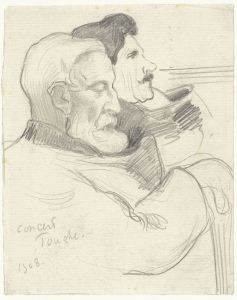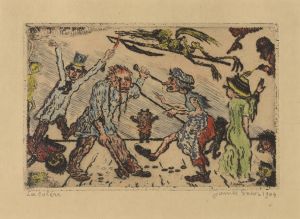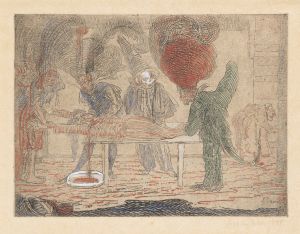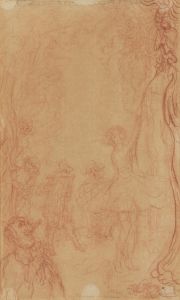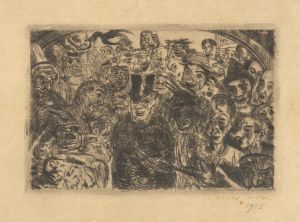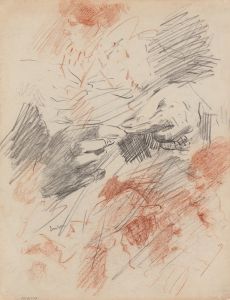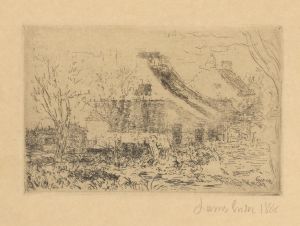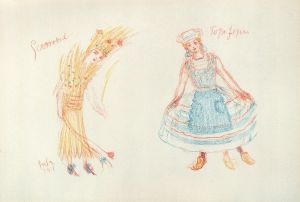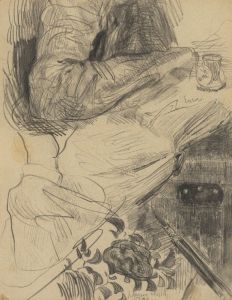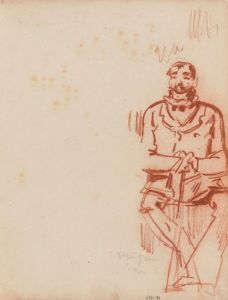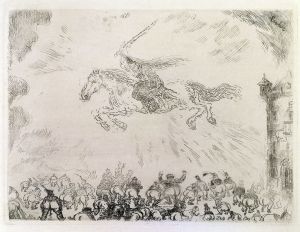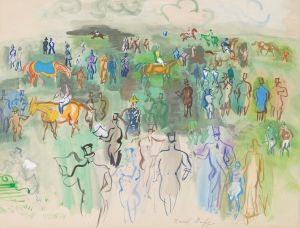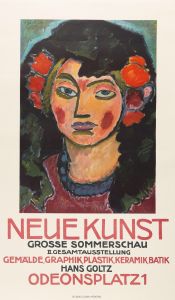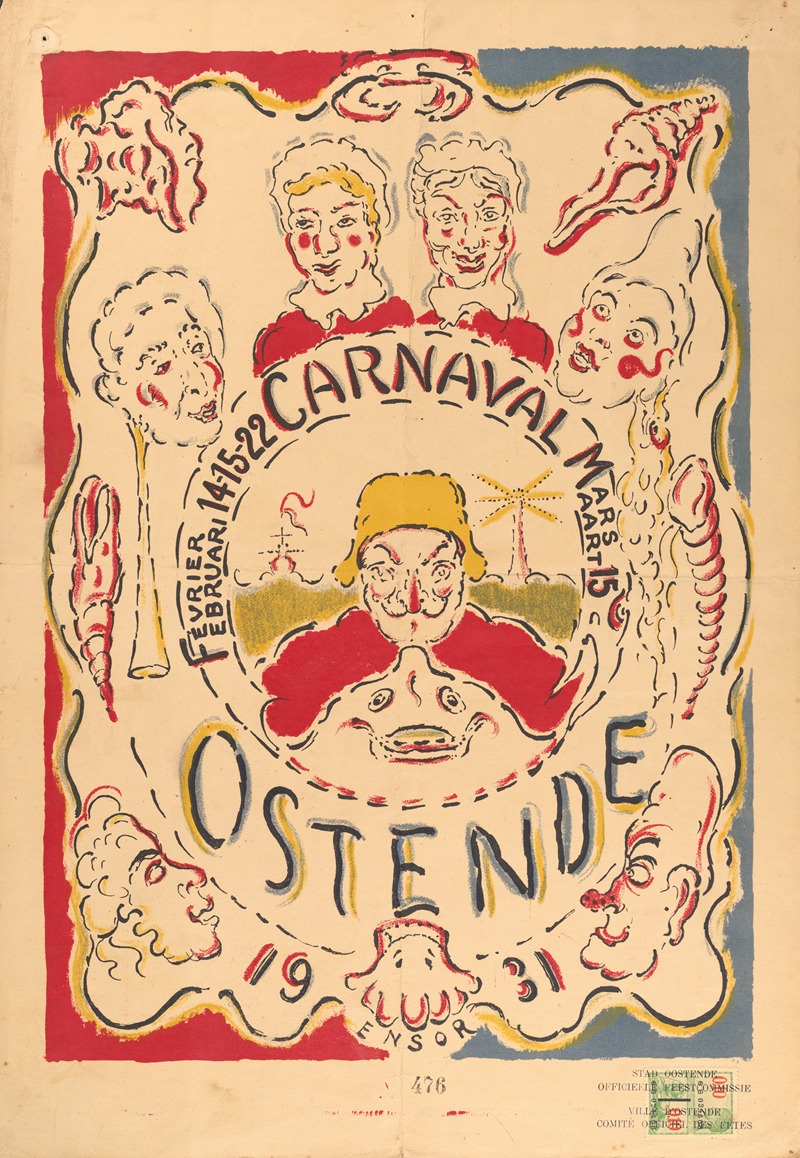
Affiche voor het carnaval van Oostende
A hand-painted replica of James Ensor’s masterpiece Affiche voor het carnaval van Oostende, meticulously crafted by professional artists to capture the true essence of the original. Each piece is created with museum-quality canvas and rare mineral pigments, carefully painted by experienced artists with delicate brushstrokes and rich, layered colors to perfectly recreate the texture of the original artwork. Unlike machine-printed reproductions, this hand-painted version brings the painting to life, infused with the artist’s emotions and skill in every stroke. Whether for personal collection or home decoration, it instantly elevates the artistic atmosphere of any space.
James Ensor, a prominent Belgian painter and printmaker, created the artwork "Affiche pour le carnaval d'Ostende" in 1899. This piece is a significant example of Ensor's unique style, which often incorporated elements of satire, fantasy, and the grotesque. Ensor is well-known for his fascination with masks and carnivals, themes that frequently appear in his work, reflecting his interest in the absurdities and complexities of human nature.
The artwork "Affiche pour le carnaval d'Ostende" was designed as a poster for the carnival in Ostend, a coastal city in Belgium where Ensor spent much of his life. Ostend was known for its vibrant carnival celebrations, which attracted visitors from across the region. Ensor's poster captures the lively and chaotic spirit of the event, featuring a vivid array of colors and a bustling composition filled with masked figures and fantastical elements.
Ensor's use of masks in this piece is particularly noteworthy. Masks were a recurring motif in his work, symbolizing the hidden aspects of human identity and the duality of appearance versus reality. In "Affiche pour le carnaval d'Ostende," the masks contribute to the sense of mystery and intrigue, inviting viewers to explore the deeper meanings behind the festive facade.
The composition of the poster is dynamic and energetic, with a sense of movement that reflects the excitement of the carnival. Ensor's bold use of color and line work creates a sense of immediacy and vibrancy, drawing the viewer into the scene. The figures in the poster are depicted in a variety of poses and expressions, adding to the overall sense of chaos and celebration.
James Ensor's work, including "Affiche pour le carnaval d'Ostende," is often associated with the Symbolist movement, which sought to express the emotional and spiritual aspects of human experience through art. Ensor's unique approach, however, also foreshadowed elements of Expressionism and Surrealism, making him a pivotal figure in the transition between 19th-century and 20th-century art.
Throughout his career, Ensor remained deeply connected to Ostend, and the city's influence is evident in much of his work. The carnival, in particular, provided a rich source of inspiration for Ensor, allowing him to explore themes of identity, society, and the human condition in a playful yet profound manner.
"Affiche pour le carnaval d'Ostende" is a testament to Ensor's ability to blend humor with deeper philosophical questions, using the carnival as a metaphor for the complexities of life. The artwork remains an important part of Ensor's legacy, showcasing his distinctive style and his contribution to the development of modern art.
Today, James Ensor is celebrated as one of Belgium's most important artists, and his work continues to be studied and appreciated for its innovative approach and enduring relevance. "Affiche pour le carnaval d'Ostende" is a prime example of his ability to capture the essence of human experience through the lens of the carnival, making it a valuable piece in the history of art.





